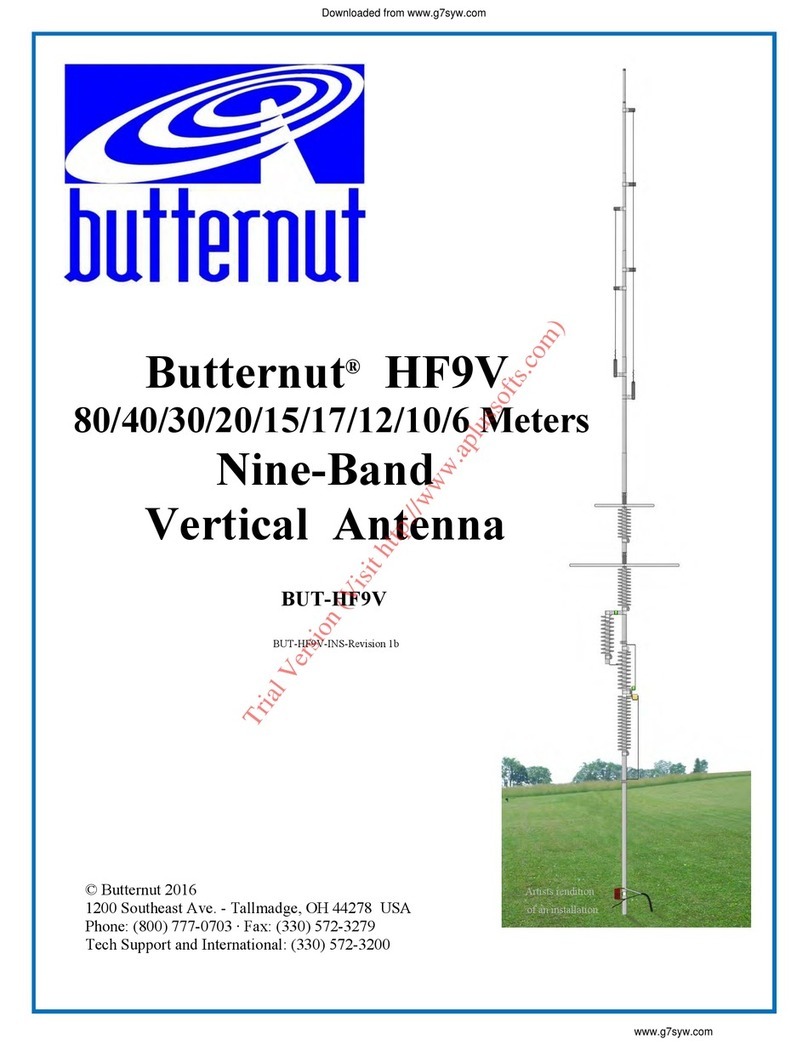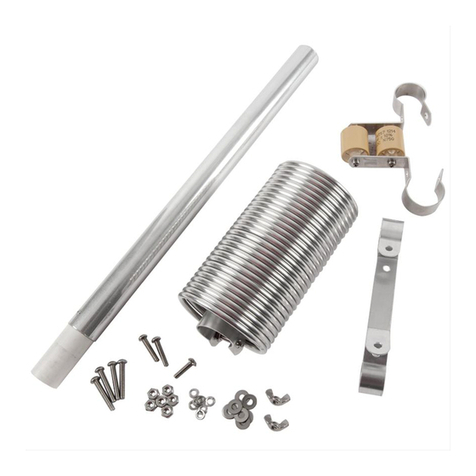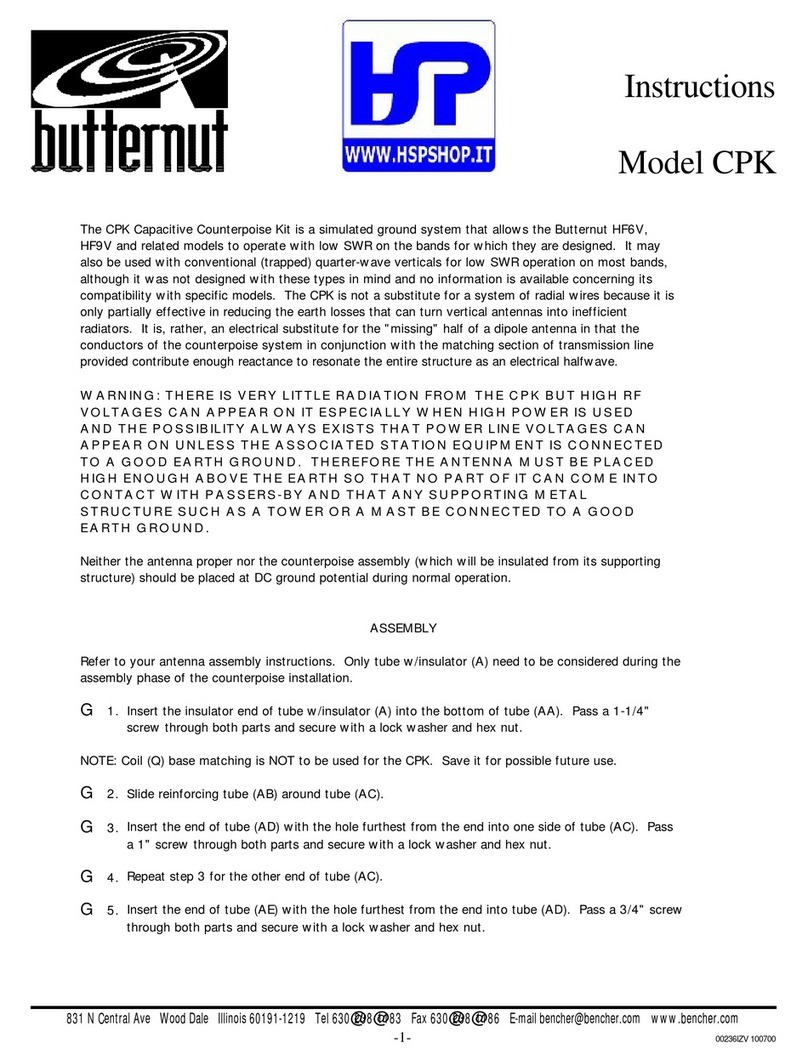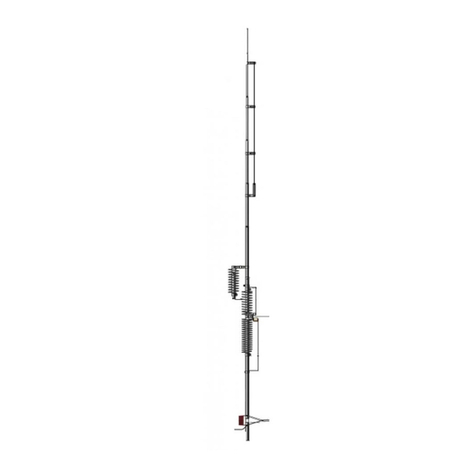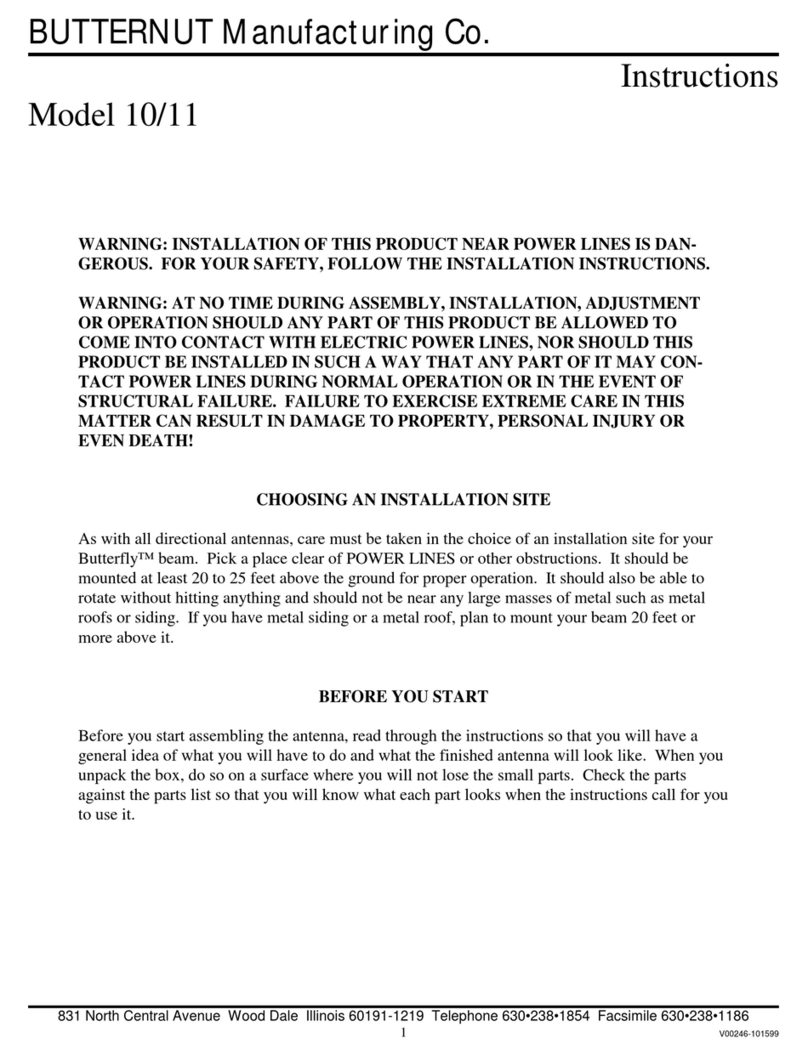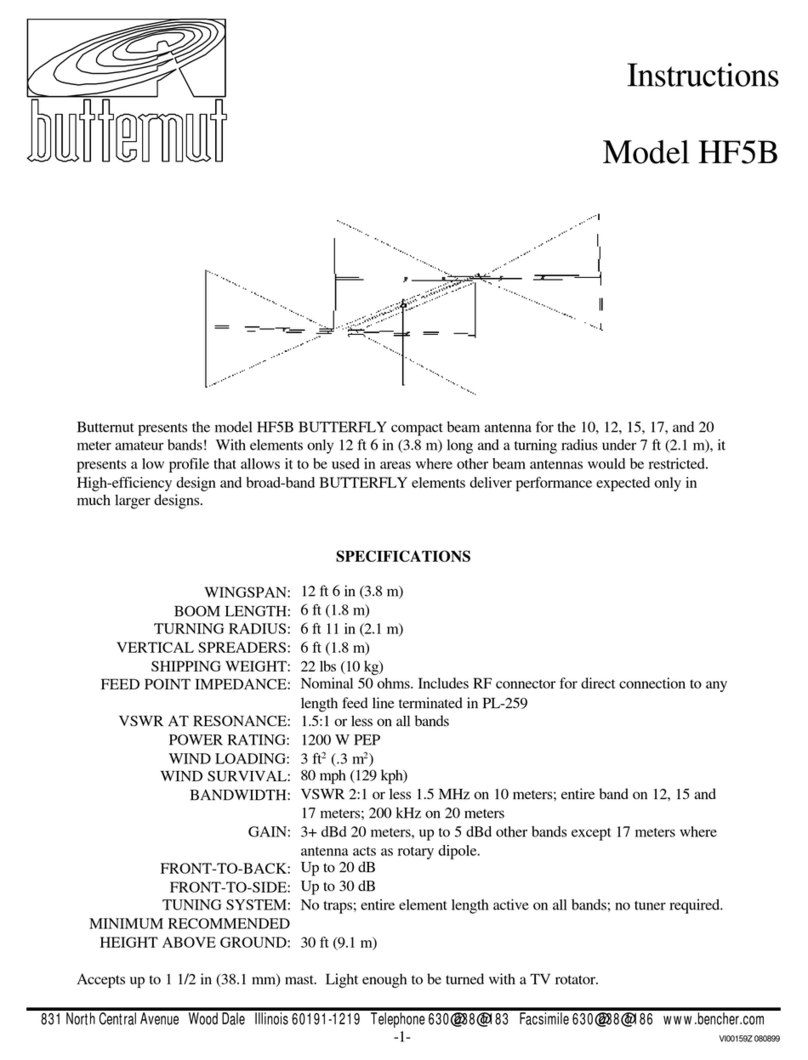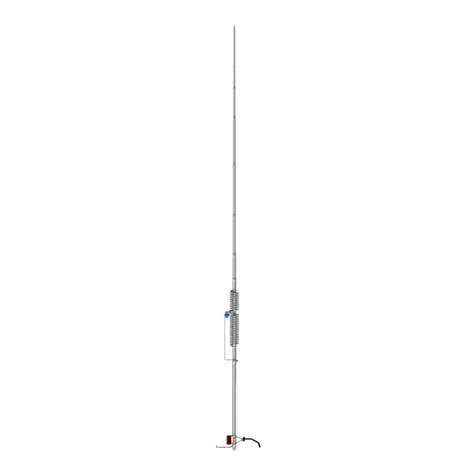
-6-
ABOVE GROUND INSTALLATION
other. Resonant radials should be connected to the braid side of the coax at the
feedline terminals and insulated at the far end. Resonant radials need not remain
parallel to the earth, and a fair amount of slope will not significantly affect SWR or
performance. If, however, resonant radials are not sufficiently elevated, the earth
below them can cause them to resonate at a much lower frequency than expected, and
their length may have to be trimmed considerably to restore the overall system (vertical
radiator and radials) to resonance for low SWR operation without having to resort to a
transmatch at the input end of the feedline.
If the antenna is to be mounted above ground it is recommended that one set of short
guys be attached to the antenna at a point that is approximately 1/3 of the way up
from the feedpoint. These will help to steady the lower sections and to prevent the
wind loading on the upper sections of tubing from transmitting an overturning
moment to the base. Four guys will offer more support than three, and unusually long
guys should be avoided. Under no circumstances should guys be placed on the upper
section of an antenna. The light tubing used in the upper half of the antenna is
capable of supporting itself in very high winds, but it cannot support itself and guy
lines that will themselves will be subject to wind and perhaps ice loading. Guys
should be made of non-stretch non-conductive material such as monofilament fishing
line in the larger sizes. Light nylon twine should be avoided regardless of its strength
rating because it can stretch as much as 15%. Polypropylene rope or even nylon rope
may also be used, although the former should be checked periodically for signs of
weather deterioration.
OPTIONAL ACCESSORIES FOR THE HF2V AND NOTES ON TOP LOADING
In its basic configuration the HF2V stands 32 feet tall and thus operates as a quarter-
wave vertical on 40 meters with reasonably good efficiency over fair to good ground
system. On 80 meters, however, this height represents something of a compromise
compared to a full quarter-wave vertical antenna fir this band. One simple way to
approach the performance of a full size vertical on this band is to attach top-loading
wires near or at the top of the antenna in order to simulate a much taller physical
structure as in figure 4. Maximum loading will occur when the wires are extended
parallel to the earth, but that arrangement would call for additional supports that are
nearly as tall as the antenna itself. The "umbrella" system shown will conserve space
and resources in that the support lines to the top loading wires may be placed at
ground level. The angle of slope for each wire is not especially critical, but 45 degrees
represents a good compromise between loading and space conservation. Fewer than
four wires may be used, although in such a case it may be expected that three wires of
given length will provide less loading than four wires of the same length. It is obvious
that the addition of top-loading wires to the HF2V will call for less inductance in the
80 and 40 meter tuning circuits, in which case the shorting strap for the 80 meter
circuit will be needed. Unfortunately, there is a limit to the amount of top loading
that may be used with the HF2V before 40 meter operation is adversely affected. Four
"umbrella" wires each attached to the antenna at the junction of tubes (K) and (L) and
each approximately 12 feet (3.65 meters) long and sloping downwards at 45 degrees,
is probably the greatest amount of loading that can be used for coverage of the entire
40 meter band with acceptable SWR, even if all the turns of the 40 meter coil are
shorted out. With this particular top-loading arrangement the 80/75 meter bandwidth
between the 2:1 SWR points should be nearly 100 kHz, and if the optional TBR-160-S
unit is used for 160 meter operation the SWR bandwidth on that band will increase to
approximately 25 kHz from the 13 kHz or so that could be expected in the absence of
top loading. If one is willing to sacrifice 40 meter operation for the sake of even
greater operating bandwidth and greater efficiency on the lower bands the "umbrella"
wires can be lengthened considerably. Four 25-foot "umbrella" wires, for example,
would provide some 125 kHz of operating bandwidth on 80/75 meters and up to 35
kHz on 160 meters. Top-loading wires should not be attached to the very tip of the
antenna because the tubing in the two uppermost sections is no stronger than it needs
to be to support itself. Operation of the HF2V may be extended to the other bands
through the addition of the following
